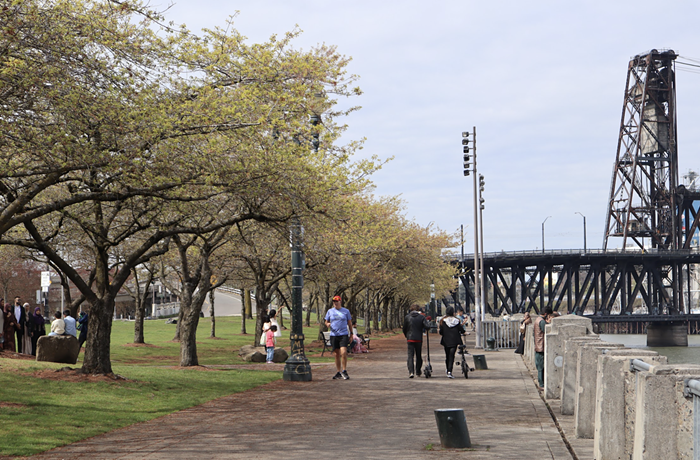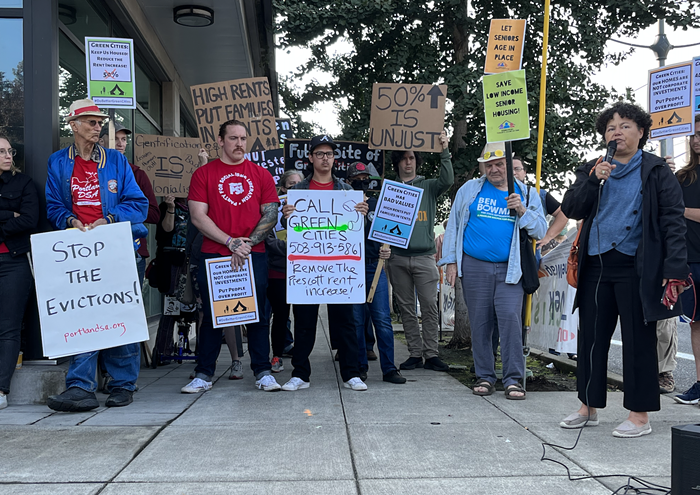"WHEN YOU PUT PEOPLE in extreme situations," says Jeremy Saulnier, "it can be scary, or tragically pathetic, or even funny to watch them flail and try to acclimate."
Blue Ruin, Saulnier's Kickstarter-aided 2013 calling card, managed to ring the cherries on all of the options above, fashioning a diabolically inventive revenge movie that repeatedly headed down unpredictably satisfying avenues. The writer/director's larger-budgeted follow-up, Green Room, gathers up that earlier promise and just goes sick with it, taking an intentionally stripped-down premise and jacking it up to ferocious speeds. As ruthlessly pedal-through-the-floor efficient as it is, the narrative also manages to find space for the director's growing assortment of decidedly unheroic heroes—who somehow remain weirdly endearing while their hastily thought-out plans fall to bloody pieces. "What I do," says Saulnier, "is revel in the details and minutia that bog people down. I account for ineptitude."
Inspired by the director's experiences with hardcore punk shows, the story follows an idealist thrash band (led by Alia Shawkat and a terrifically spacy Anton Yelchin) reduced to gas-siphoning between concerts. While spinning aimlessly through the Northwest, they take a gig deep in the Oregon woods at a venue crammed to the rafters with neo-Nazis, fronted by an ominously velvet-voiced Patrick Stewart. Things do not go well, in ways that made a theater full of jaded critics repeatedly suck in their collective breath. To lift a line from the great Joe Bob Briggs, this is a movie where anybody can die at any time.
Few things jangle like a good siege movie, and Green Room does its genre proud, mapping out the geography for the audience as soon as possible, then logically sticking to the blueprint. Saulnier cites Sam Peckinpah's classic Straw Dogs as an influence, and both movies share a knack for taking a very limited space and mining it to full, brutal capacity. "Once I've established that this film takes place almost entirely inside a concert venue," says Saulnier, "the question becomes, 'How can I dig in and really utilize what it offers?'" He does, and then some. By the end, there's scarcely a speaker, microphone stand, nook, or cranny that doesn't require a good scrub down.
So, you've gathered that it's intense, right? Saulnier, who with Blue Ruin displayed a low-down genius for making violence unexpectedly sting (nobody who saw that film will ever again take an arrow wound for granted), goes for gruesome broke with Green Room, announcing very early on that this movie plays for keeps.
"Violence has to have a very particular narrative purpose for me," he says. "The way I treated it here was abrupt and brutal and sloppy. I really curate each scene to have the most impact, and it hopefully collectively creates an environment where you're truly scared."
Splattery as Green Room gets, it establishes and sustains its mood too well for the violence to ever feel gratuitous. The random blasts of gallows humor also help things stay just this side of palatable, especially in the hilariously wobbly byplay between Yelchin and Imogen Poots' mysterious, extremely capable concertgoer. She gets all the best lines.
As to why the Brooklyn-based filmmaker chose Oregon for this waking nightmare to unfold (the film was shot in Astoria and Clackamas in 2014), he makes it clear that it was the best location for every facet of the story. "After a couple of days of research," he says, "I realized it was the perfect place to set this movie, both for the history of the white supremacist movement, and the vibrant punk scene. Most importantly, it has a lush environment that really helps isolate the action of the film." Idyllic travelogue it decidedly ain't—but this marvelous little fucked-up engine of a movie somehow does Oregon proud.


















